Did you know that Lansen offers a complete portfolio of products to read information and status from machines? Read about the four different variants down below and decide what solution best fits your need!
The so-called I/O devices come in many different variants with their own strengths and weaknesses. Regardless of the solution, all products gather information from machines and transmit the data wirelessly using wireless M-Bus- or mioty-technology.
Wired to wireless M-Bus converter (LAN-WMBUS-MA-SERIES)
With our converter you can easily read out information from machines equipped with compatible M-Bus interface and transmit the data wirelessly using the wM-Bus protocol. This means that existing infrastructure can live on, and data collection can continue with maintained security. The converter is available from 4 meters/16 loads to 500 meters/32 loads. The device will, as default, also transmit a status message on regular intervals containing information about the current M-Bus load, number of connected meters, overloads, supported meters and more.
The converter is a versatile product that can be used to solve multiple types of range issues connected to wired metering. Apart from collecting data from water- electricity- and heating meters, the converter can also be used to read data from charging posts for electric cars for example.

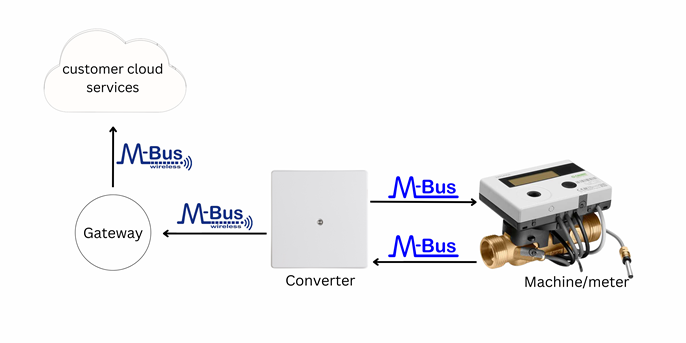
+ One of the biggest benefits with this type of solution is that the converter can collect all information directly from the machines, such as the current M-Bus load, running time and status at regular intervals. The device can read out data from as many as 500 logical M-Bus devices. Furthermore, the installation is completely automatic thanks to its plug-and-play function. All you need to do is connect the devices and turn on the power, making the installation both easy and fast.
-The converters are a versatile solution that works well in many cases, however, wired M-Bus devices who do not follow the M-Bus standard do not work well with this solution. The same thing goes for alarms since the converter works by polling the machine at a regular interval, making it less suitable for situations where you need the information instantly.
Read the productsheet here.
Modbus to Wireless M-Bus converter (LAN-WMBUS-MOD-TP)
A second variant of our converter is the LAN-WMBUS-MOD-TP, which can be used to convert Modbus RTU to wireless M-Bus, or wireless M-Bus to Modbus RTU. With a 230 VAC connection and high-quality components, the device can be used in many installations where there is a need to convert devices such as pumps or heating meters, into a certain telegram. As long as the machine supports integration with external devices, you can easily interface with the machine and read out data.

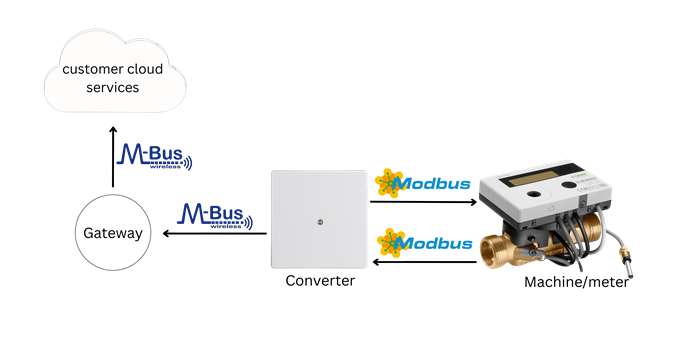
+The converter can easily collect all data from the machines, such as running time and status. With the help of Lansen configurator, a visual interface, it is also easy to set up the Modbus data requests.


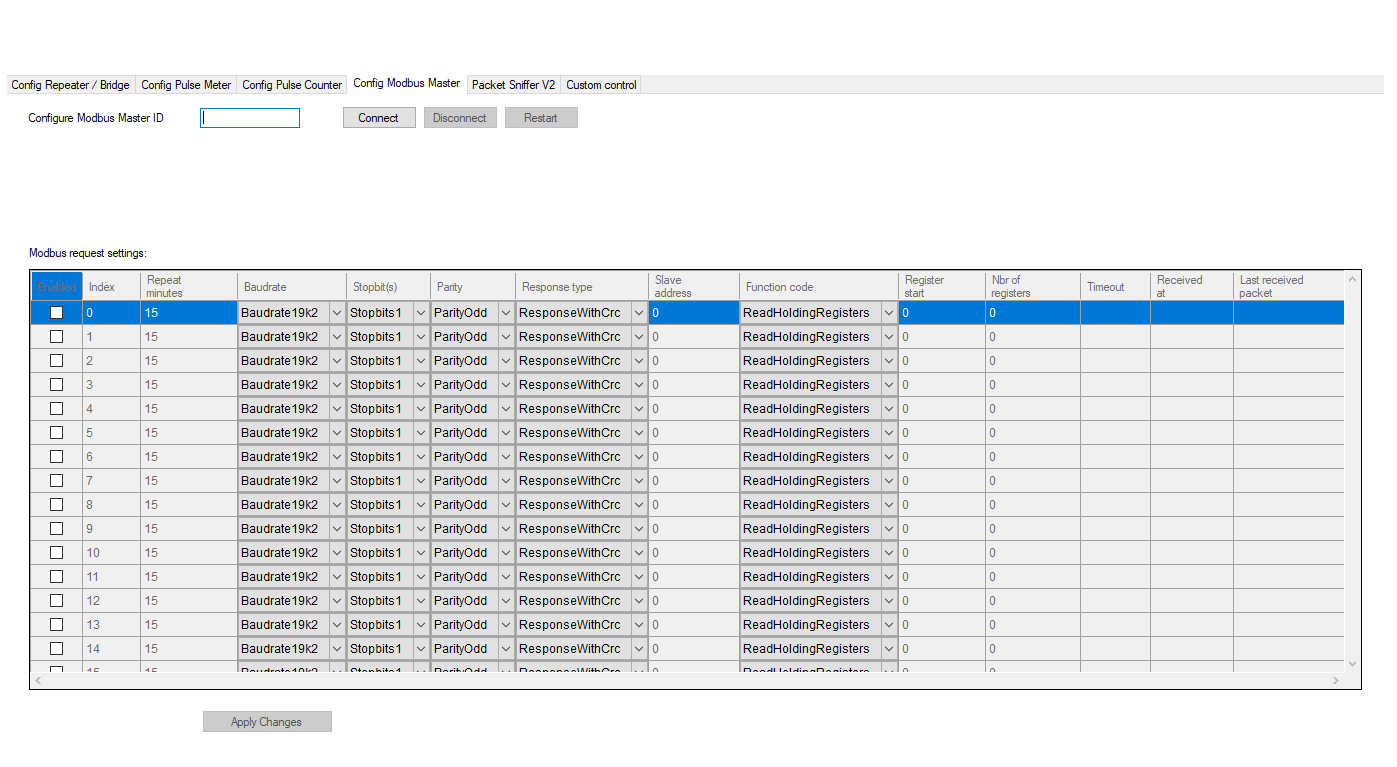
-However, configuration is needed by the installer to select what register to read out. The backend also needs to be worked on in order to handle the read-out information. Lastly, the solution is not suited for alarms since the Modbus converter works by polling the machine at a regular interval.
Dry contact (LAN-WMBUS-G2-DC-NO/NC)
With Lansen’s dry contact you can easily read the status signal as provided by the machine. Many machines supply status information using dry contact output/input. That means a circuit in the machine closes or opens the incoming circuit to alert information. For example, the sensor can be used to get alarm or other information from machines such as if the pump is running or not. The interface can either be normally closed or normally opened. The output can be sent with wireless M-Bus or mioty technology.
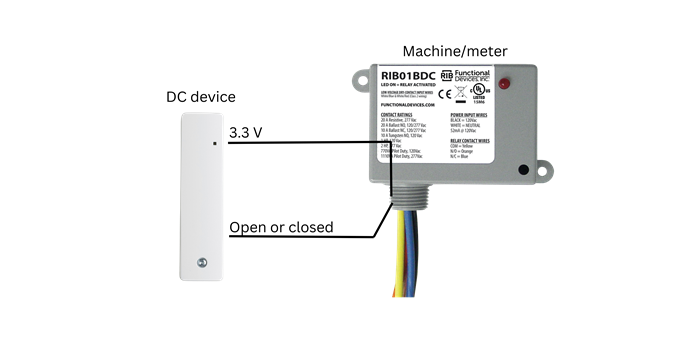
+ One of the biggest benefits with this solution is that the signal is supplied by the drycontact, which makes the interface easy to install. Another big advantage is that the sensor can instantly detect and alert if any status signals change, which provides a high degree of security. This makes the dry contact suitable for measuring different type of alarms. Lastly, the device is battery-driven and has a long service-life of 10 years, making it a reliable solution for many years to come.
-However, the machine must have dry-contact output support for this solution to work.
Read the productsheet here.
3-24 V AC/DC (LAN-WMBUS-G2-OPC)
Some machines that lack the dry contact output can use a high voltage signal instead to alert when an alarm goes off or if an error occurs. Here G2-OPC is the perfect solution. The interface is protected with an optocoupler and can detect high or low-voltage input. The output can be sent with wireless M-Bus or mioty technology.
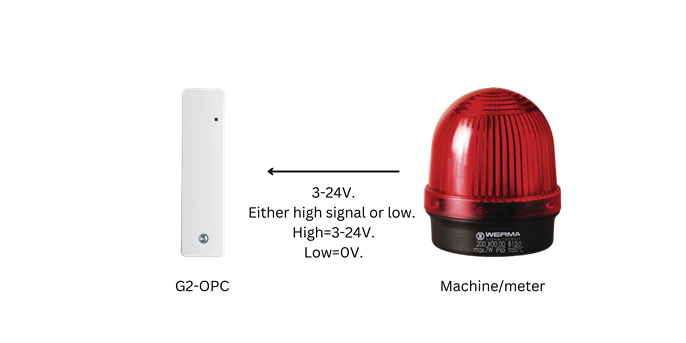
+A big advantage is that G2-OPC can gather information from machines that does not support digital interfaces, such as Modbus. Another big advantage is that the device will instantly detect and alert if any status signals change, making it a suitable solution for many machines that needs to be supervised such as freezers etc.
-However, it can only read out limited information from the machines, such as an alarm, or if a pump is running or not etc. If more information is needed, then another solution would be better. Lastly, another thing to note is that the device can only support up to 24V. and not above that.
Please note that all illustrations are simplified examples that are meant to visualize each product's area of use.
Want to use one of the presented solutions in your project? Contact us here!
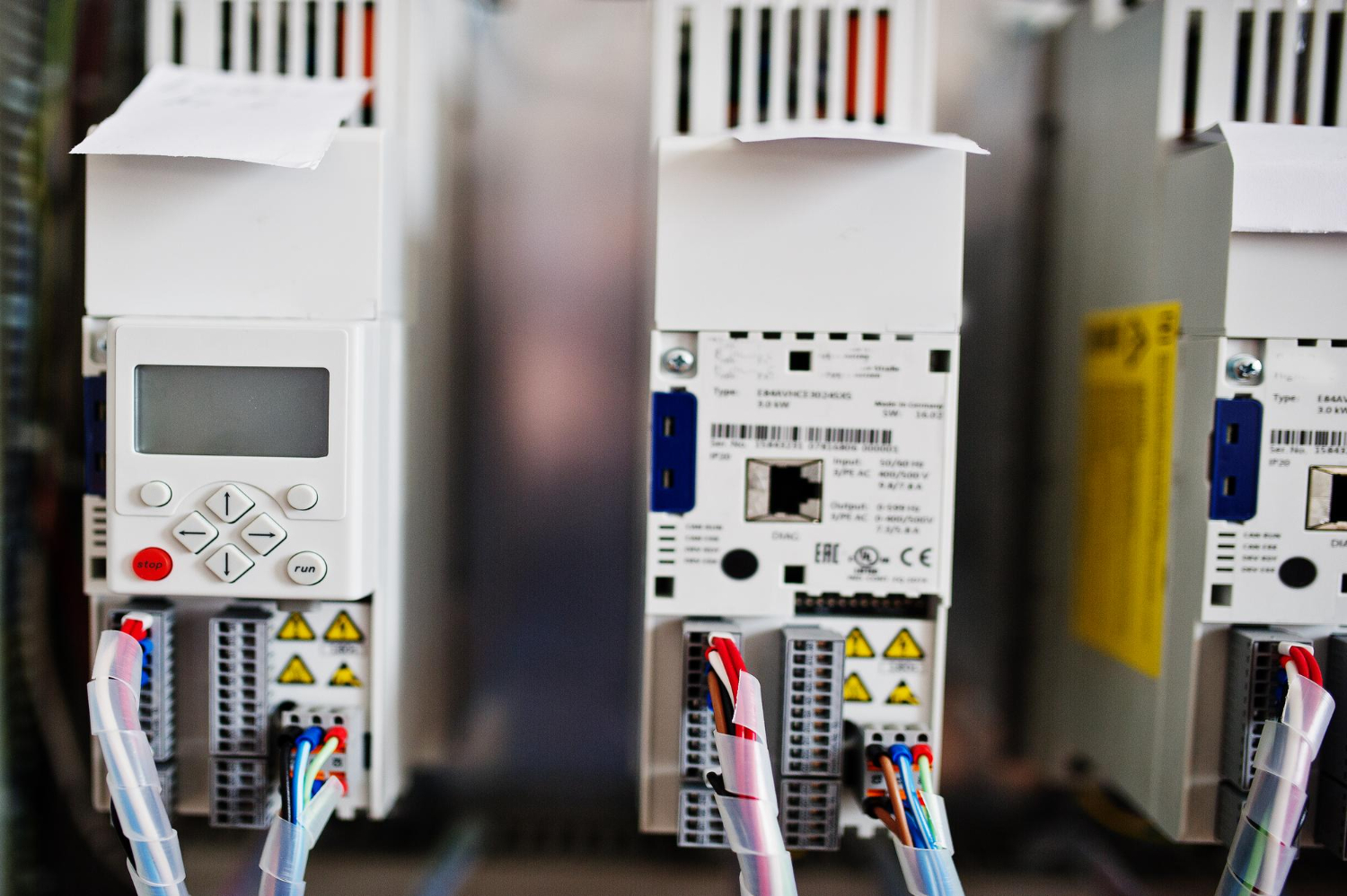
.jpg?width=600&name=featured%20image%20final%20(16).jpg)

.png?width=600&name=featured%20image%20final%20(14).png)